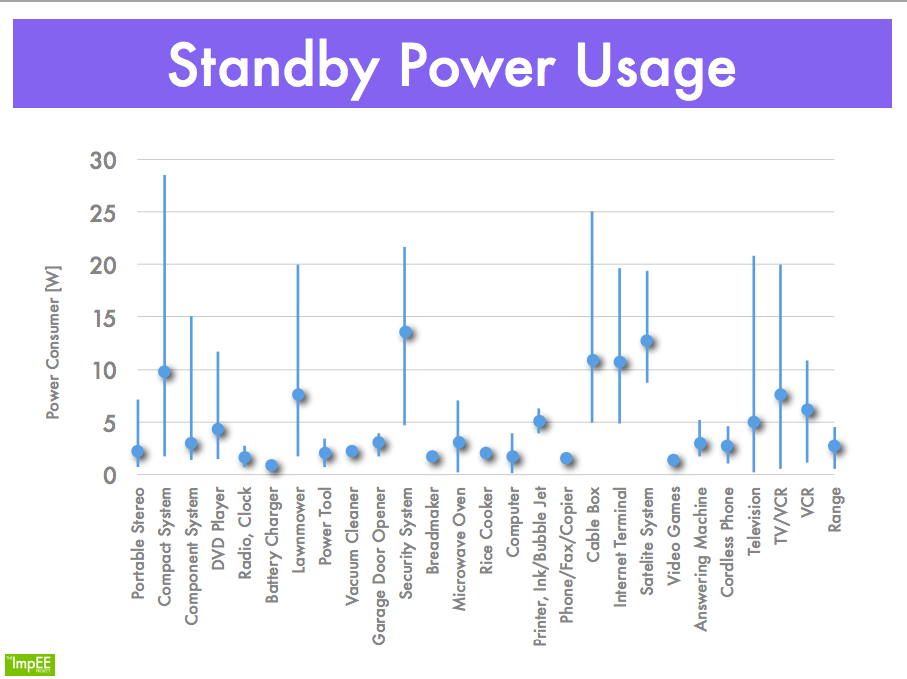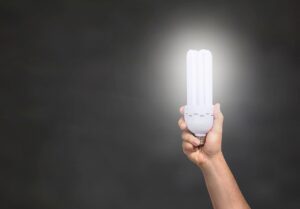As a retail business owner, you’re always looking for ways to cut costs and increase profits. One way to do this is by reducing your energy consumption. Not only does this help you save money on utility bills, but it’s also better for the environment. Here are some energy-saving tips for retail businesses:
1- Upgrade to energy-efficient lighting
Upgrading to energy-efficient lighting is one of the most effective ways for retail businesses to save energy and reduce their carbon footprint. Traditional incandescent bulbs consume a lot of energy and have a short lifespan, meaning they need to be replaced frequently. In contrast, energy-efficient LED lights use up to 75% less energy than traditional bulbs, and they last much longer. This means that you can save money on your energy bills and maintenance costs in the long run.
In addition to their energy savings, LED lights also offer several other benefits. For example, they produce less heat than traditional bulbs, which can help reduce cooling costs during the summer months. They are also more durable and resistant to shocks and vibrations, making them ideal for use in retail environments. Furthermore, LED lights offer better color rendering than traditional bulbs, which can help make your products look more attractive and appealing to customers.
When upgrading to energy-efficient lighting, it’s important to choose the right type of LED lights for your business. There are many different types of LED lights available, including bulbs, tubes, and panels, each with their own advantages and disadvantages. You should consider factors such as the color temperature, brightness, and beam angle of the lights, as well as their compatibility with your existing fixtures and wiring.
To get the most out of your energy-efficient lighting upgrade, you should also consider installing motion sensors or timers. These devices can help you save even more energy by automatically turning off lights when they’re not needed, such as during off-hours or when an area is not in use. This can help you reduce energy waste and save money on your energy bills.
2- Use programmable thermostats
Heating and cooling costs can account for a significant portion of a retail business’s energy expenses. One of the most effective ways to reduce these costs is by using programmable thermostats. Programmable thermostats allow you to control the temperature of your store more efficiently, which can help you save money on energy bills.
A programmable thermostat allows you to set different temperature schedules based on the time of day and day of the week. For example, you can set the temperature to be lower during off-hours, such as at night or on weekends when your store is closed. This can help you save energy and reduce heating or cooling costs when the building is unoccupied.
Another advantage of using programmable thermostats is that they can be controlled remotely. This means that you can adjust the temperature of your store from your smartphone or computer, even if you’re not on the premises. This can be particularly useful if you have multiple store locations, as it allows you to monitor and control the temperature of all your stores from a single location.
To get the most out of your programmable thermostat, it’s important to choose the right one for your business. There are many different types of programmable thermostats available, with different features and functionalities. Some thermostats are more sophisticated and allow you to create more complex temperature schedules, while others are simpler and easier to use.
When installing a programmable thermostat, make sure it is located in a central location away from direct sunlight, drafts, and other sources of heat. This will ensure that the thermostat accurately measures the temperature of the room and adjusts the heating or cooling accordingly.
3- Switch off equipment when not in use

Switching off equipment when not in use is an easy and effective way for retail businesses to save energy and reduce their carbon footprint. Many appliances and electronic devices continue to consume energy even when they are turned off or in standby mode. This phenomenon is known as standby power or vampire power.
According to Natural Resources Canada, vampire power accounts for approximately 5-10% of a business’s energy use. This may seem like a small amount, but over time, it can add up to a significant portion of your energy bills.
To reduce vampire power and save energy, it’s important to switch off equipment when it’s not in use. This includes computers, printers, scanners, copiers, cash registers, and other electronic devices. You can also unplug devices that have a standby mode, such as phone chargers and power strips.
Another effective strategy is to invest in energy-efficient equipment that automatically powers down when not in use. For example, Energy Star-rated computers and printers are designed to consume less energy than their standard counterparts. You can also install power strips that have automatic shut-off features, which turn off devices when they’re not in use.
In addition to saving energy, switching off equipment when not in use can also help extend the lifespan of your devices. By reducing the amount of time they spend in standby mode, you can reduce wear and tear on their components, which can help them last longer and reduce maintenance costs.
To encourage your employees to switch off equipment when not in use, you can provide training and reminders. For example, you can put up signs or stickers near equipment, reminding employees to switch them off when they’re not in use. You can also provide incentives, such as rewards or recognition, for employees who consistently switch off equipment and contribute to energy conservation.
4- Insulate your building
Insulating your building is an effective way to reduce energy consumption and save money on heating and cooling costs. Insulation helps to prevent heat from escaping during cold weather and keeps the building cooler during hot weather. This can help to maintain a comfortable temperature inside the building while reducing the amount of energy needed to heat or cool it.
The first step in insulating your building is to identify areas that are most susceptible to heat loss or gain. This includes the roof, walls, windows, doors, and floors. You can then choose the right type of insulation for each area, based on factors such as the R-value, thickness, and ease of installation.
There are several types of insulation materials available, including fiberglass, cellulose, foam, and mineral wool. Fiberglass insulation is one of the most popular types and is commonly used in walls, floors, and ceilings. Cellulose insulation is made from recycled materials and is often used in attics and wall cavities. Foam insulation is more expensive but provides excellent insulation properties and can be used in a variety of applications. Mineral wool insulation is made from rock or slag and is commonly used in walls and attics.
In addition to insulation, there are other ways to reduce heat loss and gain in your building. These include installing weatherstripping around windows and doors, sealing air leaks, and upgrading windows to more energy-efficient models. You can also install shading devices such as awnings or blinds to reduce the amount of heat entering the building during hot weather.
In addition to reducing energy consumption, insulating your building can also improve indoor air quality and reduce noise pollution. Insulation can help to prevent drafts and air leaks, which can reduce the amount of outside pollutants entering the building. It can also help to absorb sound, making the building quieter and more comfortable for employees and customers.
5- Encourage your employees to save energy

Encouraging your employees to save energy is an important step in reducing your retail business’s energy consumption and promoting sustainability. By raising awareness and providing education on energy conservation practices, you can help your employees develop habits that save energy and reduce waste. Here are some ways you can encourage your employees to save energy:
a. Educate your employees on the importance of energy conservation
Make sure your employees understand why energy conservation is important and how it can benefit the environment and the business. Provide training on the basics of energy consumption, such as the difference between standby and active modes, and how to read and interpret energy bills. This can help your employees become more aware of their energy consumption habits and take action to reduce them.
b. Implement energy-saving policies and procedures
Establish policies and procedures that encourage energy conservation, such as turning off lights and equipment when not in use, using natural light instead of artificial light, and avoiding wasteful practices such as leaving taps running. Make sure these policies are clearly communicated to your employees and provide guidance on how to implement them.
c. Set energy-saving goals
Set measurable energy-saving goals for your business and involve your employees in achieving them. This can be done by creating a team dedicated to energy conservation, assigning energy-saving tasks to individuals, or rewarding employees who contribute to energy savings.
d. Provide incentives
Provide incentives for employees who save energy and contribute to energy conservation. This can include rewards such as recognition, bonuses, or other benefits. You can also create a competition between departments or teams to see who can save the most energy, with the winning team receiving a prize.
e. Lead by example
As a business owner or manager, it’s important to lead by example and demonstrate your commitment to energy conservation. Make sure you follow the same policies and procedures you’ve established for your employees, and take an active role in achieving energy-saving goals. This can help to create a culture of energy conservation in your business and encourage your employees to follow suit.
Conclusion
In conclusion, there are many ways for retail businesses to save energy and reduce their carbon footprint. By implementing energy-saving strategies such as upgrading to energy-efficient lighting, using programmable thermostats, insulating the building, and encouraging employees to save energy, businesses can significantly reduce their energy consumption and save money on their utility bills.
Beyond the financial benefits, these energy-saving strategies also help to promote sustainability and environmental responsibility, which can benefit the business in the long term. Energy-saving practices can also help to create a more comfortable and efficient environment for employees and customers.
It’s important to note that energy-saving practices are not a one-time effort, but rather an ongoing commitment to sustainability. Regular monitoring, evaluation, and improvement of energy-saving practices are necessary to ensure their continued effectiveness.
By making energy conservation a priority, retail businesses can take an important step in reducing their environmental impact, protecting the planet, and contributing to a sustainable future.
And if you’re looking to upgrade your lighting and further reduce your energy consumption, don’t hesitate to contact Daisy Energy for all your lighting retrofit needs.




































